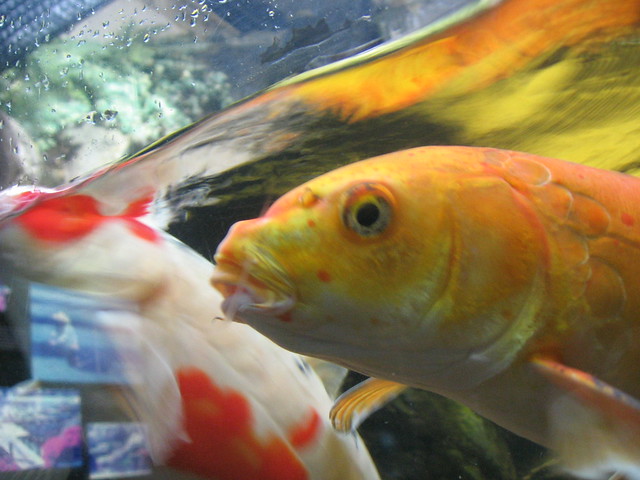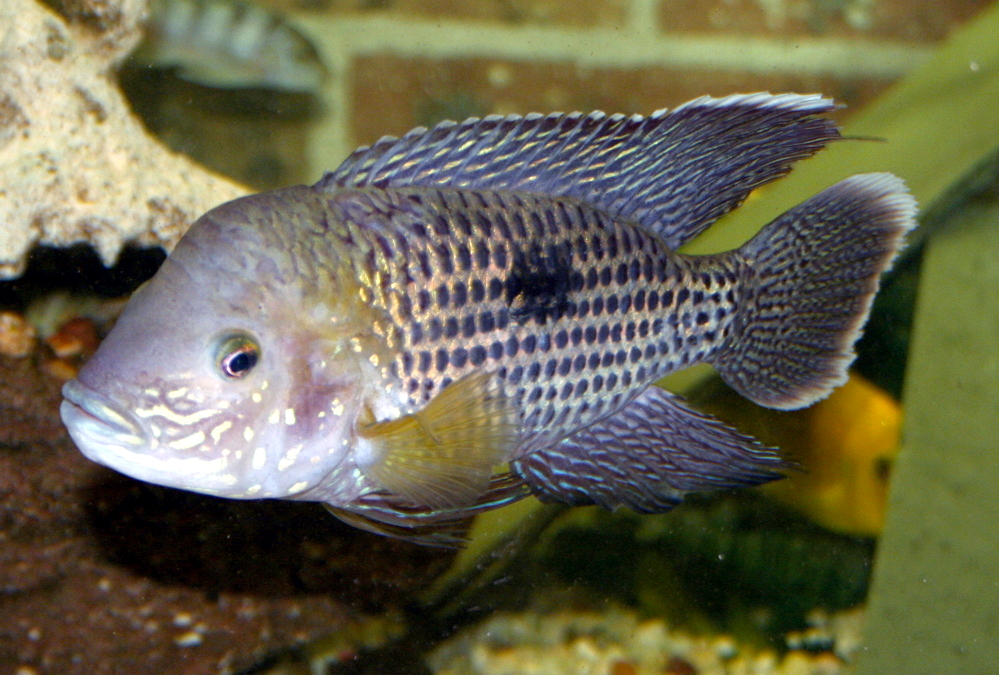 |
| Young Queen Angelfish - Photo by laszlo-photo (cc) |
The queen angelfish is commonly found throughout the Caribbean sea, Florida, Brazil and the Gulf of Mexico. It is closely related to the Blue Angelfish (Holacanthus Bermudensis) and to the untrained eye they look completely alike. These two angelfish have been known to interbreed in the wild. Their offspring have also been known as Holacanthus Townsendi. It should be noted that Holacanthus Townsendi is not a valid species, it is merely a hybrid. Fortunately, telling them apart is easy, queen angelfish possess a blue-ringed crown on its head while the blue angelfish does not.
(Holacanthus Bermudensis) and to the untrained eye they look completely alike. These two angelfish have been known to interbreed in the wild. Their offspring have also been known as Holacanthus Townsendi. It should be noted that Holacanthus Townsendi is not a valid species, it is merely a hybrid. Fortunately, telling them apart is easy, queen angelfish possess a blue-ringed crown on its head while the blue angelfish does not.
As with all larger angelfish species, juvenile coloration differs from that of an adult. Juveniles possess bright blue vertical bars from its face to its main body. These bars will slowly disappear as they grow. Adults sport a brilliant iridescent yellow and blue throughout their entire body.
Juvenile angelfish also take on a peculiar role in the wild. They assume the role of "cleaners". As cleaners they provide a valuable service for other marine fish, they feed on any parasites present on the bodies of other fish.
This is an expensive fish, small specimens usually retail for $80-$90 USD with large adults (Show quality) costing $200 and upwards.
Larger angelfish of the family Pomacanthidae have developed a well deserved reputation or being aggressive bullies in captivity. Queen angelfish is no exception.
It generally ignores other species of fish but is pretty hostile towards other large angelfish. It is especially hostile towards other queen angels or blue angelfish for that matter. One queen angelfish per tank is the general rule.
This angelfish reaches lengths of up to 18 inches. A foot and a half! They rarely achieve such lengths in captivity however, expect a maximum size of 12 to 13 inches or so.
Marine aquariums no smaller than 150 gallons should be used to house a queen angelfish. As with all larger marine fish, the bigger the tank , the better. Ensure your rock scape in the aquarium allows for ample swimming space.
, the better. Ensure your rock scape in the aquarium allows for ample swimming space.
Do not be fooled into buying smaller juveniles for a 50 gallon aquarium. They will quickly outgrow such small tanks in a matter of months. The queen angelfish is not reef safe, it can eat corals or at least nip on them until they eventually perish. Though some hobbyists have been successfully keeping them in reef aquariums, they are more often seen in large, fish-only aquariums.
They feed on tunicates, sponges, corals, algae and plankton in the wild. Avoid housing them in a reef aquarium with many corals as they can make short work of your expensive corals.
Offer them a good variety of foods from sheets of nori/seaweed to meaty foods like krill or mysis shrimp. New Life Spectrum produces some of the highest quality pellets on the market and would be my first choice as a good pellet food to offer my fish.
Formula two is a pretty balanced food for angelfish as well, containing seafood and extra algae for herbivorous fishes. It is available in pellet, flake or frozen cube form.
The most complete food available for Queen Angelfish is Angel Formula by Ocean Nutrition. This food was specifically designed to cater to the needs of large angelfish, they contain a good mix of fresh seafood, algae, vitamins and most importantly, marine sponges. Angel Formula is only available in frozen cube form.
With regards to nori sheets/seaweed sheets for your queen angelfish. You could choose either branded seaweed sheets from companies catering to herbivorous fish or you can always run down to your local supermarket and get some there. Depending on the brand they could either be very expensive or very cheap.
If you're buying from the supermarket, make sure you buy the plain, unflavoured/unspiced version. Raw nori is a good choice if available. Get a clip for your nori and stick it on the side of the aquarium glass.
I also have guides on the Queen Angelfish and the Emperor Angelfish on Hubpages complete with photos and videos so do drop by. Article Source: EzineArticles |






